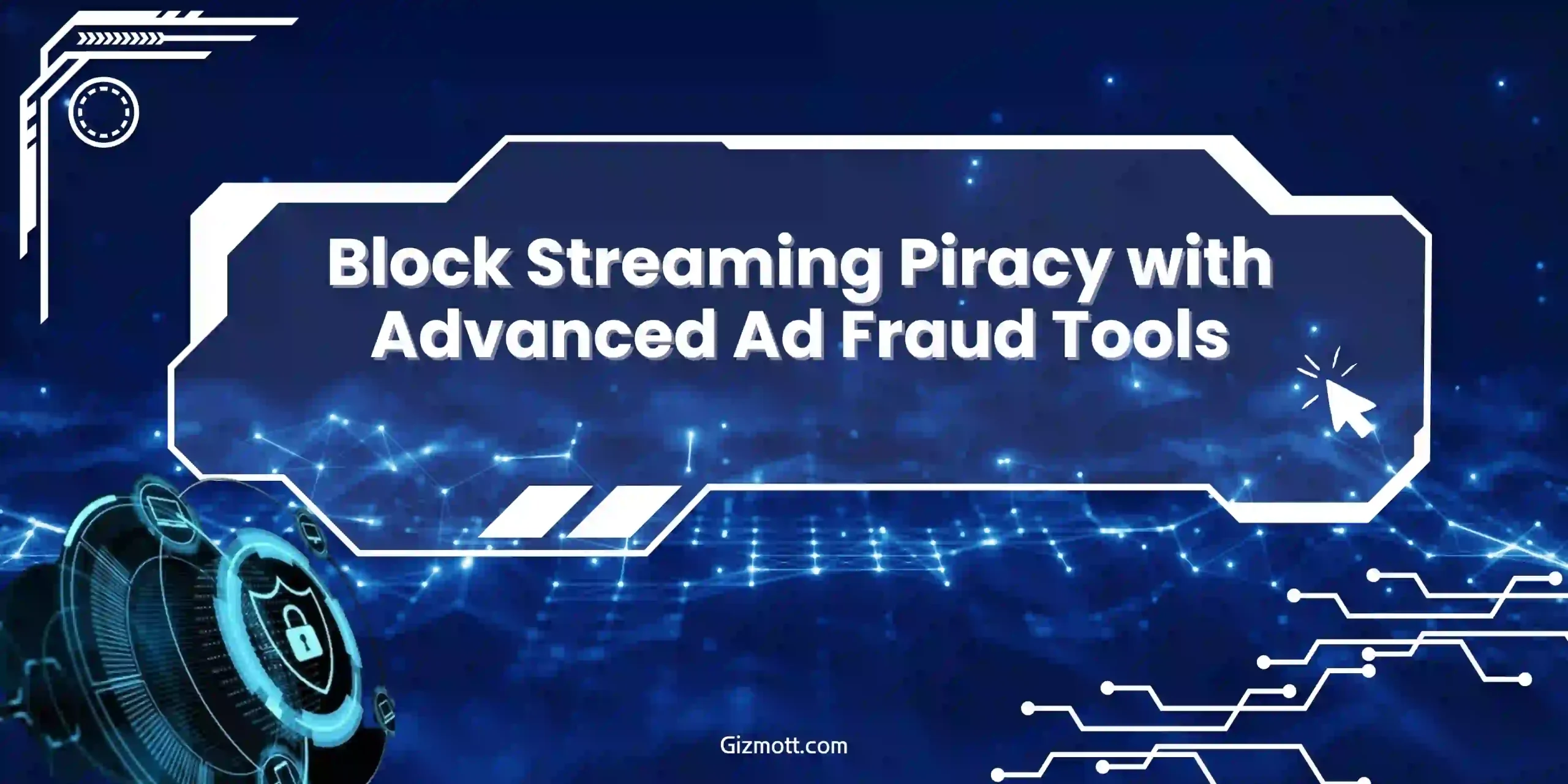How to Prevent Streaming Piracy & Ad Fraud 
Streaming piracy is a fast-moving threat that eats into revenue, damages brand trust, and exposes viewers to malware. For content owners today, the twin problems of streaming piracy and ad fraud are tightly linked: pirate streams monetize stolen content with criminal ad networks, while ad fraud schemes siphon ad budgets and poison analytics. Understanding how streaming piracy works and applying practical counter-measures is essential to protecting IP, ad revenue and user safety.
What is streaming piracy – definition and why it matters
Streaming piracy refers to unauthorized live or on-demand distribution of TV shows, movies and other video content. Unlike simple file sharing, streaming piracy often uses resilient technologies (mirror sites, IPTV, password-sharing link farms) and sophisticated ad setups to hide provenance. The harm from streaming piracy is measurable: lost subscriptions, lost ad revenue, inflated reporting errors, and higher costs for anti-fraud enforcement. Recent industry analyses show measurable economic impacts tied to streaming piracy in major markets.
Ad fraud explained: how it links to streaming piracy
Ad fraud (or ad-fraud) includes fake impressions, click farms, and bot traffic (invalid traffic, IVT) that make pirate sites appear lucrative. Pirate streams run display and video ads through shady ad exchanges and sometimes through legitimate networks that don’t detect fraud—this converts streaming piracy directly into illicit ad revenue. Detecting ad fraud on pirate inventory is therefore a frontline defense against the economics that sustain streaming piracy.
Top risks from streaming piracy and ad fraud 
- Revenue loss: conservative estimates for major markets show streaming piracy and video piracy can reduce subscription and ad revenues by high single-digit to low double-digit percentages in affected launches.
- Brand and user safety: streaming piracy often exposes viewers to malware and scams embedded in ads – risking churn and PR damage.
- Analytics contamination: ad fraud and invalid traffic (IVT) create false performance data, making campaign optimization ineffective and inflating cost per acquisition.
Practical counter-measures for content owners
1. Proactive monitoring for streaming piracy and video piracy
Use automated takedown scanners, fingerprinting, and web crawling to detect instances of streaming piracy quickly. Combine legal DMCA/administrative takedowns with rapid technical mitigation. Fingerprint both file and stream hashes to locate re-uploads and mirrors.
2. Harden ad supply chains against ad-fraud
Implement multi-layer ad fraud detection (server-side validation, click pattern analysis, and IVT filters). Block known fraudulent exchanges and apply pre-bid verification to keep ads off pirate inventory that funds streaming piracy. Use vendor solutions that specialize in publisher protection and IVT mitigation.
3. DRM, tokenized streams, and forensic watermarking
Technical controls such as DRM, tokenized session access and forensic watermarking make streaming piracy harder and help trace leaks back to source accounts—deterring account sharing and internal leaks. Forensic watermarking ties a leaked stream to a specific user session, speeding enforcement.
4. Collaborate with ad partners and platforms
Work with ad networks, DSPs and SSPs to flag and block placements that run on pirate domains. Share blacklists and suspicious domain lists so ad-fraud rings can’t monetize stolen content. Campaign transparency reduces the incentive for streaming piracy to carry ads.
5. Legal & policy action plus consumer education
Pursue takedowns, ISP blocking where available, and cooperate with industry coalitions to reduce impunity for streaming piracy operators. Simultaneously, run consumer awareness campaigns explaining risks of pirate streams (malware, scams) to reduce demand.
How to spot ad-fraud and pirate inventory in analytics
Look for anomalies: huge spikes in impressions with near-zero engagement, geographic patterns that don’t match your audience, unnatural session durations, and mismatch between high CTR and low conversions. These are classic signs that ad fraud and streaming piracy are contaminating your data.
Tools & vendors to consider (shortlist)
- IVT and click-fraud platforms that block bots and invalid traffic.
- Forensic watermarking and DRM providers for proactive content protection.
Why technology + human workflows beat streaming piracy
Automated detection finds issues at scale, but human review (legal, ad ops, and trust & safety teams) prioritizes the highest-risk incidents and negotiates takedowns. This hybrid approach reduces the business impact of streaming piracy by combining speed, legal muscle, and ad supply intelligence.
Gizmeon: features that help fight streaming piracy and ad-fraud
 Gizmeon provides end-to-end streaming tools that help content owners reduce streaming piracy exposure and ad fraud risk. Key Gizmeon features include secure DRM integration, watermarking options, analytics, and partner integrations for ad verification. Gizmeon makes it easier to deploy tokenized streaming, monitor suspicious playback, and coordinate takedowns – practical steps to stop streaming piracy and reduce ad-fraud losses.
Gizmeon provides end-to-end streaming tools that help content owners reduce streaming piracy exposure and ad fraud risk. Key Gizmeon features include secure DRM integration, watermarking options, analytics, and partner integrations for ad verification. Gizmeon makes it easier to deploy tokenized streaming, monitor suspicious playback, and coordinate takedowns – practical steps to stop streaming piracy and reduce ad-fraud losses.
Action plan – 30/60/90 days to reduce streaming piracy and ad fraud
- 0–30 days: Run a piracy sweep, add domain blacklists, audit ad partners for IVT protection.
- 31–60 days: Deploy watermarking/DRM on high-value content; integrate an ad fraud detection vendor.
- 61–90 days: Implement pre-bid ad verification, legal takedown workflows, and a consumer awareness campaign to reduce demand for streaming piracy.
Final word – treat streaming piracy and ad fraud as a single threat
Streaming piracy and ad fraud form a toxic economy: pirate streams need ads, and ad fraud makes them profitable. Content owners that combine technology (DRM, watermarking, IVT detection), ad supply hygiene, legal action, and audience education will be best positioned to protect revenue and brand trust. Start with a focused pilot (one title or one launch), measure the reduction in pirate instances and IVT, and scale what works. Protecting your content is protecting your business stop streaming piracy before it becomes the headline.




